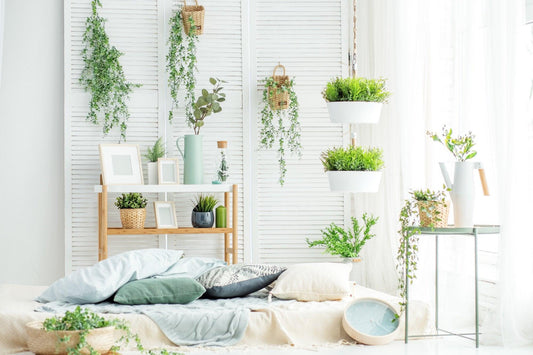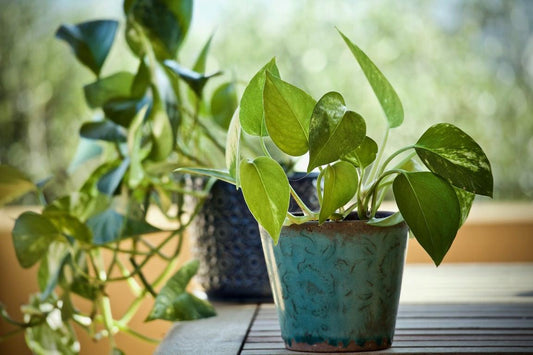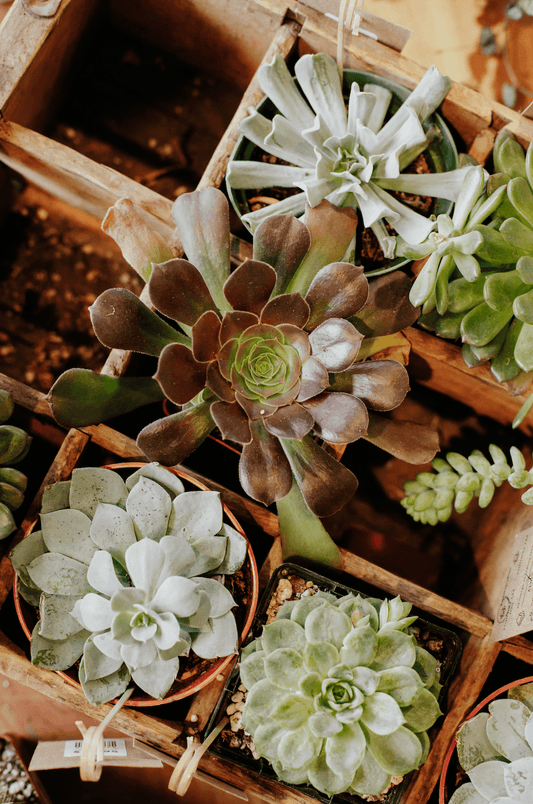Did you know that indoor plants can do more than just look pretty? Their benefits include a reduction of stress, an increase in productivity, and a better attitude.
If you've been feeling like your home needs a different feel, then adding some greenery can be the perfect solution.
As you might've guessed though, there are so many plant types around. Which ones will thrive in your house, and which are easier to care for if you have a busy lifestyle?
In this article, we'll show you the different types of indoor plants you can get to perk up your space.
Philodendrons
Philodendrons are one of the easiest types of plants to grow, so they're fantastic for beginners. Most plants in this genus have spade-shaped leaves, and there are two types: vining and non-climbing.
Philodendrons are typically fast growers and aren't very fussy. They need partial sunlight and only need moderate watering.
There are many affordable yet beautiful philodendrons available, such as the heartleaf, Birkin, and Brasil. For more of a challenge, or if you like more exotic plants, there are pricier plants such as the pink princess, white princess, and Florida ghost.
Pothos
Pothos are very similar to philodendrons, and some get confused with the others. Most plants here also have heart-shaped leaves, and you can have the fast-growing leaves trail down in hanging planters. If you want the leaves to grow bigger, then add a moss pole for the vines to attach to and climb up.
Pothos are great if you're a neglectful plant lover, as they're resilient. They're low-maintenance and are forgiving if you forget to water them. In fact, you should wait until the soil's dried out to water them again.
They don't need much light either, although more sun will encourage more growth. In addition, they're not picky about what type of soil you give them.
"Ordinary" pothos like golden ivy, silver, and marble queen are already stunning in their variegation patterns. They're not expensive either.
Alocasias
Alocasias are tuberous and broad-leaved plants that are also known as "elephant's ear". These plants produce either heart or arrow-shaped leaves that are large in size.
Admittedly, these aroids can be more difficult to grow and maintain than philodendrons and pothos. They need warm and humid conditions, as well as bright indirect light. They're heavy feeders too, so you'll have to regularly fertilize them during the summer.
Do note that if your home's temperature drops below 60F, there's a good chance your alocasias will go dormant in the winter. In that case, don't throw your plants out. Instead, water sparingly, and they'll start growing leaves again in the spring.
Some interesting alocasia plants to get include Polly, cuprea, regal shield, dragon scale, and silver dragon.
Monsteras
When people say "monstera", they usually mean the Monstera deliciosa. This plant is also known as the Swiss cheese plant or split-leaf philodendron. Its large fenestrated leaves are a beauty to have in the house, as it'll automatically feel like a tropical jungle.
The Monstera deliciosa requires a warm and humid environment, as well as partial light. You'll need lots of room, as this giant will be full-sized in about three years. Make sure you give it well-draining soil, as well as a moss pole to encourage growth.
Other types of monsteras include Monstera albo, esquelito, adansonii, mini monstera (not actually a monstera, but Rhaphidophora tetrasperma), and Peru.
Hoyas
For something that's almost unkillable that produces pretty flowers too, turn to the hoya. These plants have woody stems and waxy leaves, which prove how robust they are. While you can grow hoyas as vining plants, you can put them on trellises as well.
Hoyas require bright indirect light and well-draining soil that's moderately moist. They're low-maintenance, but if you take good care of them, they'll reward you with blooming clusters of small star-shaped flowers.
Some more ordinary hoyas include curtisii, carnosa, and Mathilde. For something more interesting, try the Hindu rope, which has thick coils of leaves. The Hoya kerri is cute too, as its leaves are shaped like hearts.
Snake Plants
Snake plants (or Sansevieria) are another type of hardy plant that can withstand lots of neglect, making them excellent for beginners. Sometimes, you can go months without watering them, and they won't even change in appearance.
Most plants have long and tough leaves that have a swordlike appearance. They can adapt to low-light areas, although they do best with a couple hours of morning sunlight.
String Ofs
Do you like hanging plants but don't have room for something as big as philodendrons and pothos? Then the "string of" plants are perfect for your living space.
These plants come from a wide variety of genera, such as Ceropegia, Senecio, and even Ficus. Some popular string ofs include:
- Pearls
- Tears
- Hearts
- Dolphins
- Frogs
- Turtles
As implied, the leaves are shaped like little versions of their names!
Ferns
Ferns have amazing fronds that offer interesting texture and volume to any space. They can be low-maintenance, but the trick is to keep them in ideal conditions. Otherwise, they're very fussy plants that are tough to keep alive.
Typically, ferns require mostly shady areas that have high humidity and need consistent moisture. This means you can hang up a bunch in your bathroom to create a jungle feel in there.
Some key choices include heart leaf, maidenhair, staghorn, and rabbit's foot.
Succulents
Succulents are plants with thick and fleshy leaves that help them retain water in harsh desert conditions. This means you won't have to water them often.
There are over 10,000 species of succulents, so there's a wide array to spruce up your home with. Some types you can buy include:
- Kalanchoe
- Haworthia
- Echeveria
- Sedum
- Lithops
Decorate Your Space With These Types of Indoor Plants
As you can see, there are so many types of indoor plants you can decorate your space with. Whether it's the easygoing pothos, the fussier alocasia, or drought-tolerant hoyas, snake plants, and succulents, you'll find plants of all shapes and sizes, as well as care needs.
What this means is you're bound to find a type or two that suit your lifestyle. As a result, you'll have beautiful greenery that you can reap plenty of benefits from.
To get started, browse your plant options with Terracotta.




